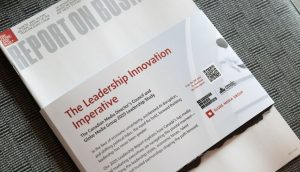Nokia is predicting that about 25% of the entertainment consumed by people in 2012 will come not from traditional media groups but from ‘circular entertainment.’ The marketer surveyed 9,000 trend-setting consumers from 17 countries between July and September ’07 about their digital behaviours and lifestyles for the recent study, A Glimpse of the Next Episode, with help from UK-based The Future Laboratory. The circular entertainment phenomenon refers to media created, edited and shared within their peer circle rather than coming out of traditional media channels.
Nokia VP multimedia Mark Selby says current trends show that ‘people will have a genuine desire not only to create and share their own content, but also to remix it, mash it up and pass it on within their peer groups – a form of collaborative social media. We think it will work something like this: someone shares video footage they shot on their mobile device from a night out with a friend, that friend takes that footage and adds an MP3 file – the soundtrack of the evening – then passes it to another friend. That friend edits the footage by adding some photographs and passes it on to another friend and so on. The content keeps circulating between friends, who may or may not be geographically close, and becomes part of the group’s entertainment.’
Future Laboratory trends director Tom Savigar adds, ‘Consumers will be active and unrestrained by the ubiquitous nature of circular entertainment. Key to this evolution is consumers’ basic human desire to compare and contrast, create and communicate. We believe the next episode promises to deliver the democracy politics can only dream of.’
Of the 9,000 consumers surveyed, 23% buy movies in digital format; 35% buy music on MP3 files; 25% buy music on mobile devices; 39% watch TV on the internet; 23% watch TV on mobile devices; 46% regularly use IM, 37% on a mobile device; 29% regularly blog; 28% regularly access social networking sites; 22% connect using technologies such as Skype; 17% take part in Multiplayer Online Role Playing Games; and 17% upload to the internet from a mobile device.
The study also notes other key driving trends gearing up for the mainstream, including immersive living, geek culture, g tech and localism. Immersive living is the rise of lifestyles that blur the lines between on- and offline. Geek culture will blur the lines between being commercial and creative as consumers want recognition and rewards for participation. G Tech, an existing social force in Asia, means entertainment will be more collaborative, democratic, emotional and customized – all of which are ‘female’ traits. Localism will be a key theme as consumers take pride in seeking out the local and homegrown.























